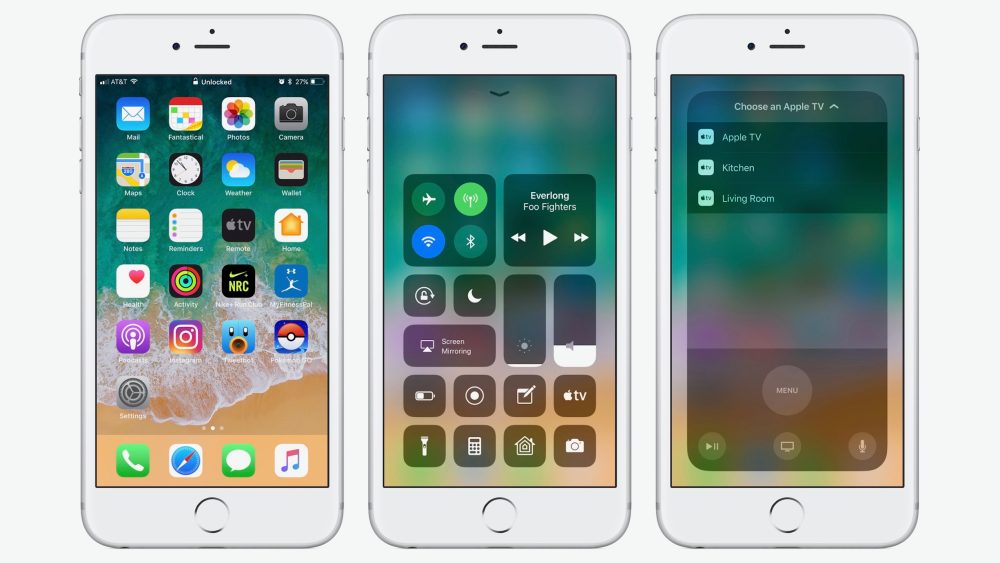Migrating to iOS 11 for developments, is it really necessary to update?
If you ask me, yes, it is!
Since iOS 10.1, there were several speculations suggesting that 32-bit iOS apps would no longer be supported by the upcoming operating system. This has been confirmed with the iOS 11 beta launch.

Every September brings a new version of Apple iOS. For developers in 2017, iOS 11 adds powerful augmented reality and machine learning capabilities.
So, set your imagination free!
iOS 11 sets a new standard for the world’s most advanced operating system. Your app will now become more smart and powerful using Core ML (Machine Learning).
1. Benefits of Upgrading to iOS 11 support devices
- Performance Improvement
Your app can become even more efficient to use. In addition, the battery consumption can also be minimized, meaning the device can last longer even if it’s in continuous use.
- UX Improvement
The App Store is getting its most vital redesign with iOS 11. Apple is now mainly focusing on the title and content part. This means it’s a great opportunity for app owners to redesign their app’s UX and get maximum attention in the new Apple App Store.
2. How can we help you get these Benefits?
We have discussed below the steps to migrate for iOS 11, the latest update by Apple Inc. this year. To learn more as an iOS developer beginner you can refer the Apple Developer Documentation.
3. Migrating to Swift 4 and introducing ARKit Framework
- Pre-Migration Preparation
Before you begin to migrate your project from any of the previous Swift version to Swift 4, it is recommended to manage your project under source control. Also, you need to check that the project you need to migrate builds successfully in the Swift 3.2 version.
Moreover, the compiler in Swift 3.2 and Swift 4 are similar, so that both targets can coexist and link together.
- Swift Migration Documentation
When you are working on Xcode 9 environment you can easily get the migration option in the Issue Navigator.
You will be presented with a list of targets to migrate. Targets that do not contain any Swift code will not be selected.
You need to add the attribute @objc in your code as a static reference. Next, you have to follow the Swift 4 minimize inference migration to complete the conversion.
- SDK changes
The vast majority of changes come between the previous SDK and current SDK. There might be few renaming of identifiers and types. The two most prevalent SDK changes are moving global constants into static-type properties and transforming string constants into Swift enumeration cases.
- Coding Standards and Changes
The String has new API in Swift 4 some of which return Substring or String. The Migrator will insert explicit initialize conversions when an API now expects a different type.
If you have multiple schemes in your project that cover different targets, you will only get notified that you need to migrate one of them. You will need to manually select the new scheme, and then run Edit -> Convert -> To Current Swift Syntax to migrate the remaining schemes.
- ARkit Framework introduced by iOS 11
You probably need to download the iOS 11 beta and the latest beta of Xcode 9, which includes the iOS 11 SDK to build ARkit features in your app today.
Integrate iOS device camera and motion features to produce Augmented Reality (AR) experiences in your app or game. It adds 2D or 3D elements to the live view from a device’s camera in a way that makes those elements appear to inhabit the real world.
You can use this Framework for iPhone X and iPad app development that provide unparalleled user experiences.
4. Migrating from Android to iOS
- From Android Studio to Xcode 9
When you are going to start for iOS 11 development, the first thing you need to get familiar is Xcode and its shortcuts. Xcode is basically an IDE where iOS programming language is written to develop iOS apps.
Application project configuration seemed somehow clearer in Xcode 9 if compared to an Android Studio project which is a mix of files you just need to know first (for e.g. manifest and gradle build definitions). Xcode 9 UI for project management is more intuitive.
Handling application info and capabilities are clearer than in Android projects.
- Project Structure and UX
In Android, the UX definition style in XML files and all the resources are defined under res-folder. Moreover, it requires thorough knowledge in the application code and UI flow.
Whereas in iOS, there are storyboards where you do not need to write code manually and it has proven to be a great way to organize the UI. This automatically hikes the UX rate.
Apple introduced the concept of storyboards, to manage the screens in your app. You can still use the .xib way of development.
The files with .storyboards extension represent the flow of all the screen apps in a single file.
You need to add the attribute @objc in your code as a static reference. Next, you have to follow the Swift 4 minimize inference migration to complete the conversion.
- UI Definition and Missing Layouts
The UI definition is quite similar between the two platforms. The basic unit is Activity in Android which is something like a UIControllerView in iOS.
There is a huge set of ready-to-use UI components on the Android side, but totally missing some of them in iOS.
Sure, they have their own. However, it is relatively easy to start using external libraries & UI components in both cases.
- External Libraries
To set up external libraries into Android projects Gradle build systems and dependencies were used which were quite easy to handle. But while working on iOS 11, the equivalent tool used is CocoaPods. The configuration is a bit complicated for CocoaPods, but once set up it is quite a simple tool.
The steps are basically similar in iOS, but the one major difference is building and running a simulator is a lot faster than on Android’s emulator.
Conclusion
Given above are the steps for a developer’s guide to migrate towards iOS 11 developing standards.
Building iOS apps is a little bit tricky and curved line compared to the apps with the Android background. Even if you have some basic knowledge on iOS development, you need to be updated with the latest tools and coding standards that matches the developer documentation.
Hope this article turned fruitful for the one looking to switch on development for iOS 11.
This is all for now!
Stay tuned to learn more on iOS development.
Have a good day ahead!







Comments